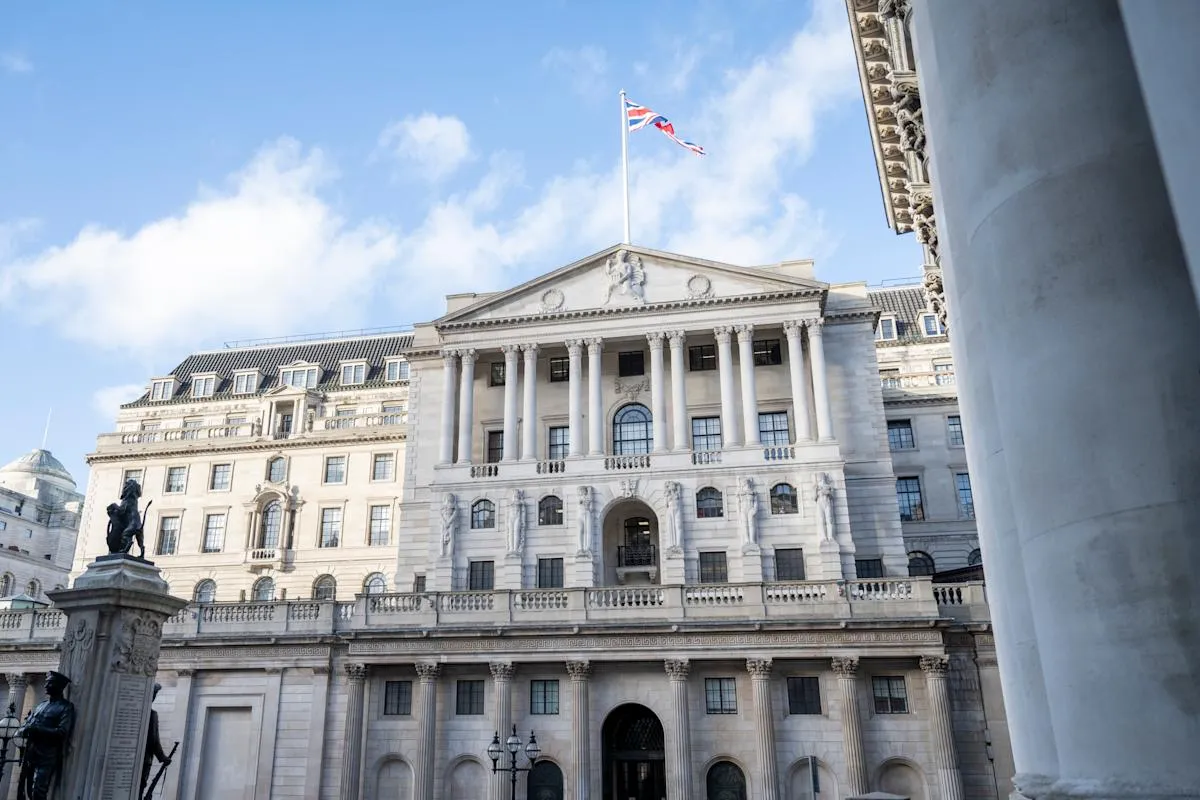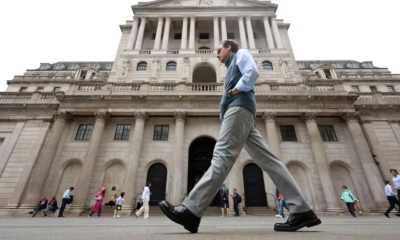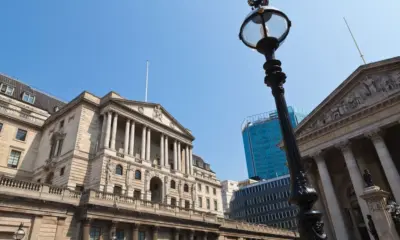Business
Bank of England Hints at Rate Neutrality as Markets Digest Forward Guidance

Introduction
The Bank of England is entering a critical period in its monetary policy strategy. After two years of steady tightening to combat stubborn inflation, the central bank is signaling a move toward a neutral interest rate stance. This shift indicates that while inflationary pressures are easing, policymakers are not yet ready to declare victory. For markets, businesses, and households, this marks a significant turning point. It suggests that the most aggressive phase of policy tightening is likely behind us, yet uncertainty about the timing of future rate changes remains high.
During the latest Monetary Policy Committee meeting, the Bank decided to maintain its benchmark interest rate at four percent for a fourth consecutive time. Officials described the rate as “restrictive but appropriate,” reflecting their confidence that inflation is gradually moving closer to target levels. However, they also warned that cutting rates too soon could risk undoing progress made in stabilizing prices. Investors are now closely watching economic data for signs of when the Bank may begin to adjust policy in 2026.
Moving Toward Neutral Policy
Rate neutrality represents the point at which monetary policy neither stimulates nor restrains economic growth. Over the past two years, the Bank of England has pursued one of its most aggressive tightening cycles in decades, lifting rates from near zero to current levels in an effort to rein in double-digit inflation. Now, with price growth easing and economic activity slowing, officials are signaling that rates are likely close to their neutral level.
Recent inflation data have reinforced that view. Headline inflation has dropped below four percent, down sharply from its 2023 peak. Core inflation, which excludes food and energy, remains slightly above three and a half percent. Wages, while still growing faster than before the pandemic, are beginning to moderate. Together, these trends indicate that inflationary momentum is waning.
Governor Andrew Bailey emphasized that any future policy shifts will depend entirely on incoming data. The current interest rate is likely high enough to cool demand without tipping the economy into recession, but the Bank will require consistent evidence of falling inflation before considering rate cuts. The tone is one of patience and caution rather than urgency.
Market Reactions and Investor Expectations
Financial markets reacted swiftly to the Bank’s updated guidance. Bond yields fell modestly as investors interpreted the announcement as the end of the tightening cycle. The pound weakened slightly against the dollar and the euro, reflecting reduced expectations for further rate increases. Meanwhile, stock markets responded positively, with gains in interest-sensitive sectors such as real estate, construction, and utilities.
Analysts describe the Bank’s statement as a form of soft forward guidance. It provides reassurance that the rate cycle has peaked without locking policymakers into a rigid timeline for adjustments. This approach allows flexibility while preventing excessive speculation in financial markets.
Still, opinions among investors remain divided. Some believe that keeping rates high for an extended period risks slowing business investment and household spending. Others argue that lowering rates prematurely could reignite inflation, particularly if wage growth remains elevated. The challenge for the Bank lies in striking a balance that maintains credibility while avoiding unnecessary economic drag.
Balancing Inflation and Growth
The broader UK economy is showing resilience but remains fragile. The services sector continues to expand modestly, supported by tourism, financial services, and professional industries. Manufacturing, however, is still struggling with weak global demand and high input costs. Consumer sentiment has improved slightly since early 2024 but remains cautious, with households prioritizing savings over discretionary purchases.
Maintaining a neutral policy stance may help stabilize inflation expectations while supporting gradual recovery. Yet the risk of prolonged high borrowing costs is significant. Many mortgage holders and small businesses are still adapting to higher interest expenses. If rates remain restrictive for too long, domestic demand could weaken further, putting pressure on employment and investment.
The labor market is showing early signs of rebalancing. Unemployment has inched up to around four and a half percent, while vacancy rates are declining. Wage growth has cooled from its 2023 highs but remains stronger than before the pandemic. These trends suggest the labor market is softening but not collapsing, giving policymakers confidence that inflation will continue to slow without triggering widespread job losses.
International Context
The Bank of England’s policy shift aligns broadly with trends among other major central banks. The United States Federal Reserve and the European Central Bank have both paused rate increases while maintaining a cautious stance. This synchronization has contributed to calmer global financial conditions after several years of volatility.
For the UK, however, the challenges are uniquely domestic. Post-Brexit trade frictions, energy market uncertainty, and sluggish productivity continue to weigh on the economic outlook. While the pound has stabilized in recent months, exports remain under pressure. The Bank’s commitment to a neutral rate policy aims to restore confidence in long-term stability without sacrificing competitiveness.
London’s financial markets have responded with cautious optimism. Banking and insurance stocks have benefited from clearer policy signals, and foreign investment in UK gilts has increased. The sense that the tightening cycle is nearing its end has improved risk appetite, even as investors remain alert to global economic risks.
Risks and Future Outlook
Despite progress in taming inflation, the outlook remains uncertain. A sudden rebound in global energy prices, supply chain disruptions, or unexpected wage acceleration could challenge the Bank’s current assumptions. Domestically, fiscal pressures and elevated public debt constrain the government’s ability to offset any downturn with new spending initiatives.
If inflation proves more persistent than expected, the Bank may need to hold rates higher for longer, delaying economic recovery. Conversely, a sharp slowdown in growth could force an earlier pivot to rate cuts, potentially unsettling markets that have priced in stability. The coming months will test the Bank’s ability to navigate these competing risks with precision and transparency.
Conclusion
The Bank of England’s move toward rate neutrality marks an important inflection point in its fight against inflation. It signals that policymakers believe the economy has reached a more balanced position, where further tightening is unnecessary but easing remains premature. Markets are adjusting to this new reality, reflecting both relief that rate hikes may be over and caution about what lies ahead.
The path forward will depend on data, discipline, and clear communication. By maintaining a steady, measured approach, the Bank can preserve the credibility it has rebuilt after years of economic turbulence. For households and businesses, the prospect of stability is welcome, even if relief is not yet fully in sight. The transition to a neutral stance may not immediately boost growth, but it sets the stage for a more sustainable and predictable economic environment heading into 2026.




















